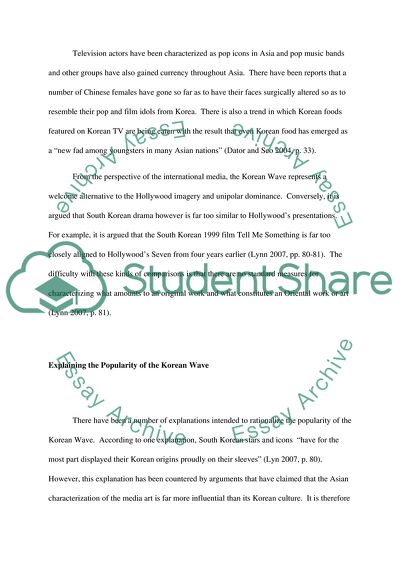Cite this document
(Hallyu - Korean Wave Sweeping Across East Asia Research Paper, n.d.)
Hallyu - Korean Wave Sweeping Across East Asia Research Paper. Retrieved from https://studentshare.org/culture/1752745-hallyu-korean-wave-sweeping-across-east-asia
Hallyu - Korean Wave Sweeping Across East Asia Research Paper. Retrieved from https://studentshare.org/culture/1752745-hallyu-korean-wave-sweeping-across-east-asia
(Hallyu - Korean Wave Sweeping Across East Asia Research Paper)
Hallyu - Korean Wave Sweeping Across East Asia Research Paper. https://studentshare.org/culture/1752745-hallyu-korean-wave-sweeping-across-east-asia.
Hallyu - Korean Wave Sweeping Across East Asia Research Paper. https://studentshare.org/culture/1752745-hallyu-korean-wave-sweeping-across-east-asia.
“Hallyu - Korean Wave Sweeping Across East Asia Research Paper”, n.d. https://studentshare.org/culture/1752745-hallyu-korean-wave-sweeping-across-east-asia.


